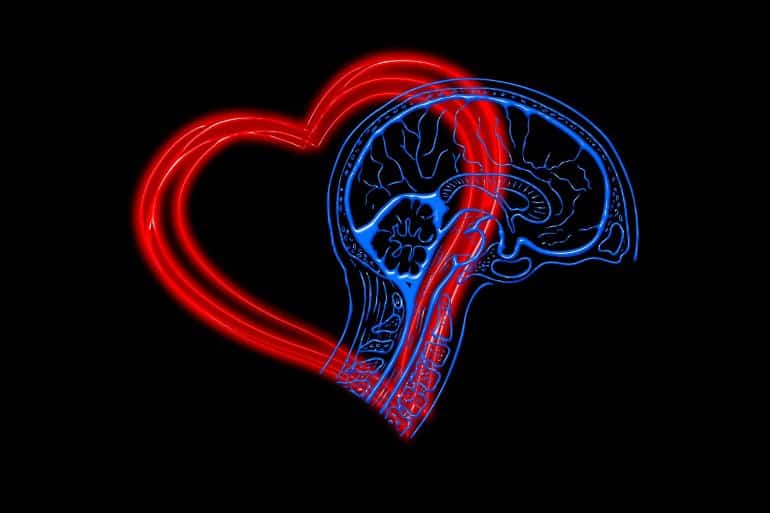Summary: Heartbeat evoked potential provides evidence of the presence of consciousness in coma patients, a new study reveals.
Source: University of Liege
A new study conducted jointly by the University of Liege (Belgium) and the Ecole normale superieure – PSL (France) shows that heart brain interactions, measured using electroencephalography (EEG), provide a novel diagnostic avenue for patients with disorders of consciousness.
This study is published in the Journal of Neuroscience.
Catherine Tallon-Baudry (ENS, CNRS) introduces : “The scientific community already knew that in healthy participants, the brain’s response to heartbeats is related to perceptual, bodily and self-consciousness. We now show that we can obtain clinically meaningful information if we probe this interaction in patients with disorders of consciousness.” In the past decades several important improvements for the diagnosis of these patients have been made, yet, it remains a big challenge to measure self-consciousness in these patients that cannot communicate.
For their study, the researchers included 68 patients with a disorder of consciousness. Fifty-five patients suffered from the minimally conscious state, and showed fluctuating but consistent signs of consciousness but were unable to communicate, and 13 patients in the unresponsive wakefulness state (previously called vegetative state) who do not show any behavioural sign of awareness. These patients were diagnosed using the coma recovery scale-revised, a standardized clinical test to assess conscious behaviour.
“As these patients suffered from severe brain injury, they might be unable to show behavioural signs of awareness. Therefore, we also based our diagnosis on the brain’s metabolism as probe for consciousness. This is a state-of-the art neuroimaging technique that helps to improve the diagnosis of patients with disorders of consciousness. Although these scans are very informative, they can only be acquired in specialized centers,” says Jitka Annen (GIGA Consciousness, ULiege).
The researchers recorded brain activity during resting state (i.e. without specific task or stimulation). They selected EEG segments right after a heartbeat and EEG segments at random timepoints (i.e. not time-locked to a heartbeat). They then used machine learning algorithms to classify (or diagnose) patients into the two diagnostic groups.

Diego Candia-Rivera (ENS) further comments: “EEG segments not locked to heartbeats were informative to predict if a patient was conscious or not, but EEG segments locked to heartbeats were more accurate in doing so. Our results indicate that the heartbeat evoked potential can give us supplementary evidence for the presence of consciousness.”
It is important to note that the heartbeat evoked responses were more in accordance with the diagnosis based on brain metabolism than the diagnosis based on behavioural assessment. It seems therefore that the heartbeat evoked response can be used to measure a perspective of self-consciousness that is not assessed successfully using behavioural tools.
“The next challenge is to translate our findings to clinical applications so that all patients with disorders of consciousness can benefit from better diagnosis using widely available bedside assessment technologies,” concludes Steven Laureys, head of GIGA Consciousness research unit and Centre du Cerveau (ULiege, CHU Liege).
About this consciousness research news
Source: University of Liege
Contact: Steven Laureys – University of Liege
Image: The image is in the public domain
Original Research: Closed access.
“Neural responses to heartbeats detect residual signs of consciousness during resting state in post-comatose patients” by Diego Candia-Rivera, Jitka Annen, Olivia Gosseries, Charlotte Martial, Aurore Thibaut, Steven Laureys and Catherine Tallon-Baudry. Journal of Neuroscience
Abstract
Neural responses to heartbeats detect residual signs of consciousness during resting state in post-comatose patients
The neural monitoring of visceral inputs might play a role in first-person perspective, i.e. the unified viewpoint of subjective experience. In healthy participants, how the brain responds to heartbeats, measured as the heartbeat-evoked response (HER), correlates with perceptual, bodily, and self-consciousness.
Here we show that HERs in resting-state EEG data distinguishes between post-comatose male and female human patients (n=68, split into training and validation samples) suffering from the unresponsive wakefulness syndrome and patients in minimally conscious state with high accuracy (random forest classifier, 87% accuracy, 96% sensitivity and 50% specificity in the validation sample).
Random EEG segments not locked to heartbeats were useful to predict (un)consciousness, but HERs were more accurate, indicating that HERs provide specific information on consciousness. HERs also led to more accurate classification than heart rate variability. HER-based consciousness scores correlate with glucose metabolism in the default mode network node located in the right superior temporal sulcus, as well as with the right ventral occipito-temporal cortex.
These results were obtained when consciousness was inferred from brain glucose metabolism measured with Positron Emission Topography. HERs reflected the consciousness diagnosis based on brain metabolism better than the consciousness diagnosis based on behavior (Coma Recovery Scale-Revised, 77% validation accuracy). HERs thus seem to capture a capacity for consciousness that does not necessarily translate into intentional overt behavior.
These results confirm the role of HERs in consciousness, offer new leads for future bedside testing, and highlight the importance of defining consciousness and its neural mechanisms independently from behavior.
Significance statement
Detecting consciousness without relying neither on overt behavior nor on asking to mentally perform a specific task is both a fundamental issue pertaining to the nature of consciousness, and a clinical challenge.
Here we show that the transient brain response elicited at each heartbeat captures residual consciousness in the resting-state EEG of post-comatose patients.
The results show that brain responses to an internal bodily signal might help specify the gray zone of consciousness, i.e., the fleeting conscious feelings that are not necessarily associated with the performance of a specific task nor translate into behavioral outputs.






